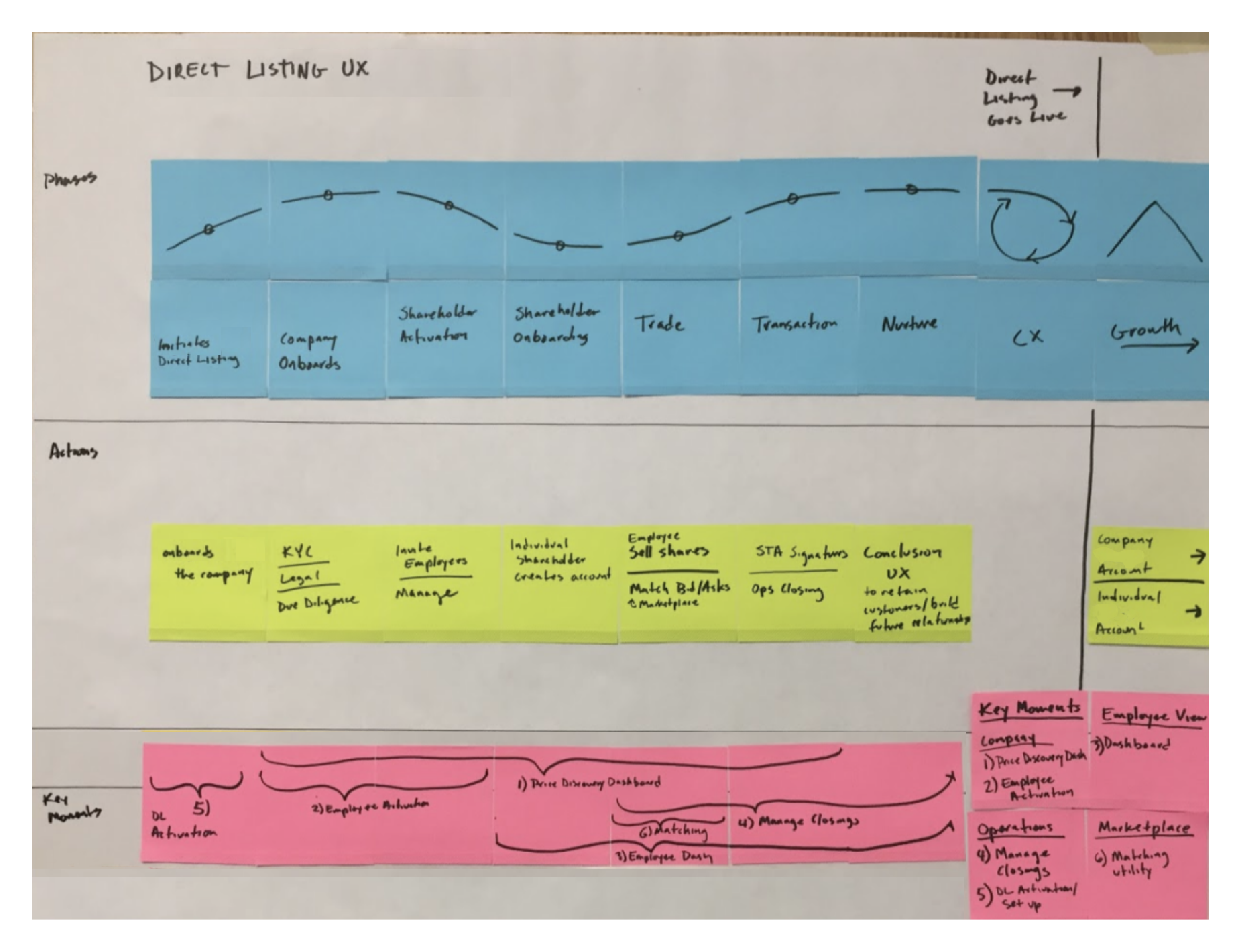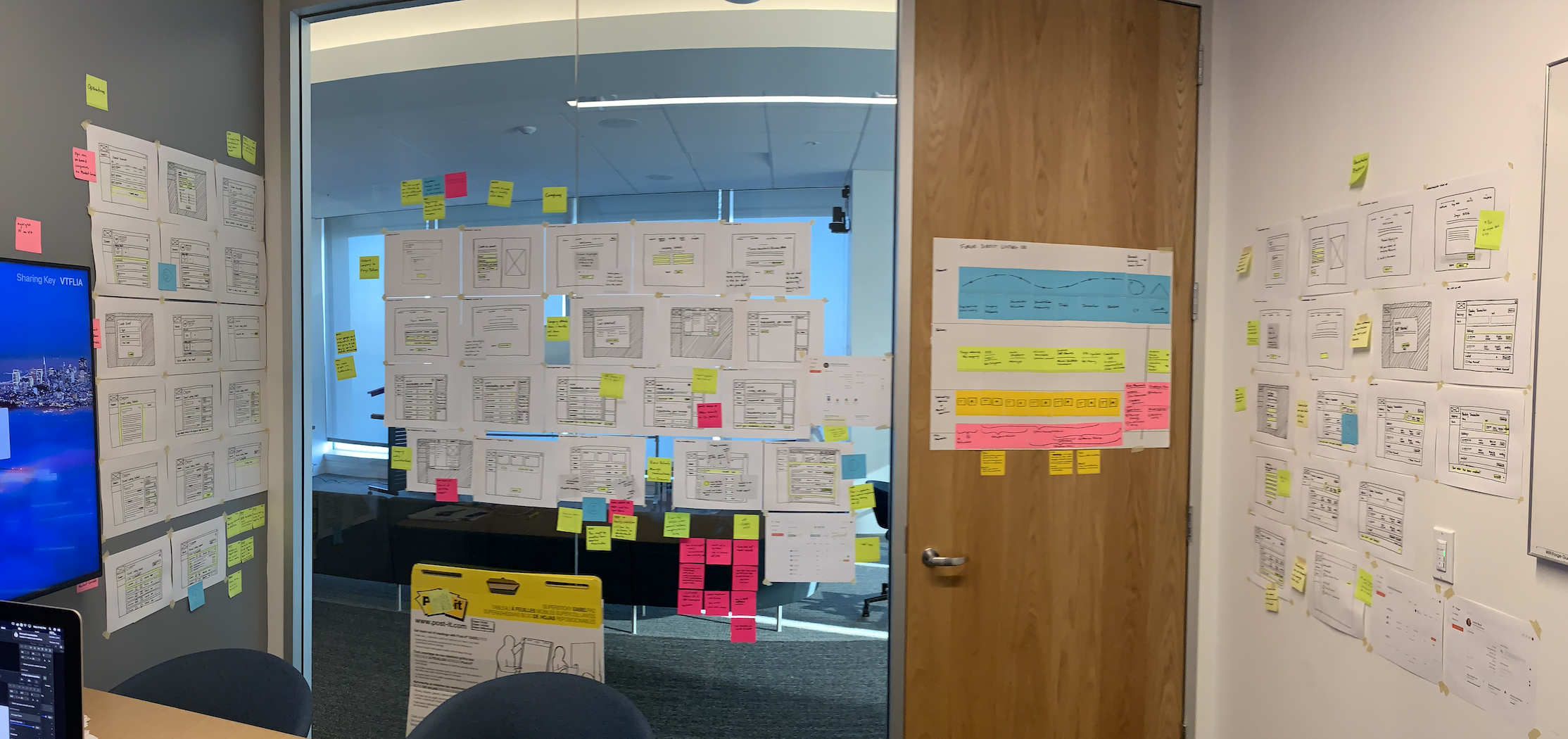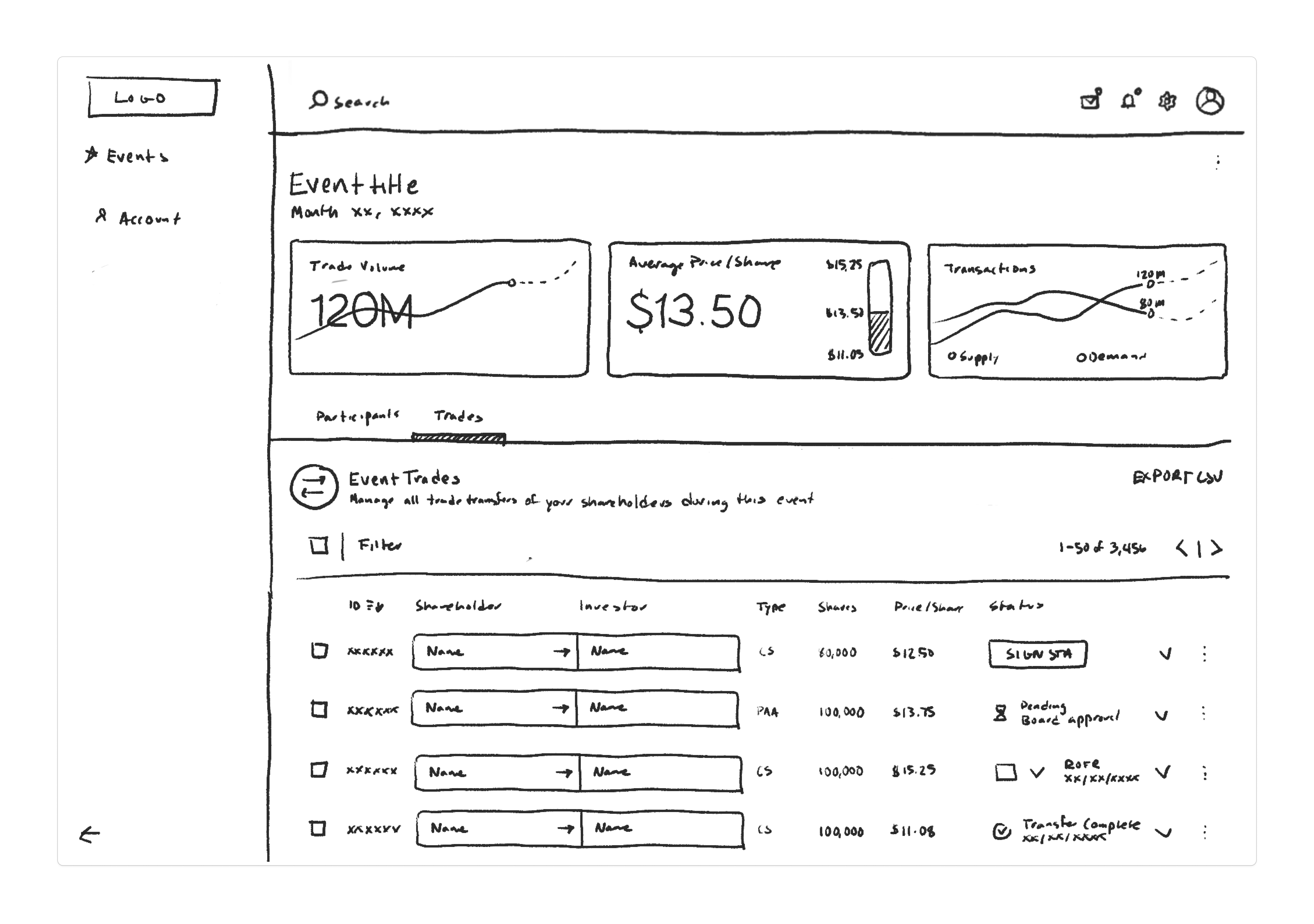Context
Forge is a unique gateway to pre-IPO investment opportunities. It stands out by connecting institutional and retail investors to private company shares. Its mission is to revolutionize the private market, making it more accessible and transparent.
As coaches and contributors, Lab Zero played a crucial role in helping Forge navigate the challenging transition from the startup to the growth phase. Under intense pressure to deliver and expand their service offerings, they needed to move fast to understand their customers’ needs and test potential solutions. Our role in articulating the vision for new services and aligning the teams around that vision was critical to their growth.
Goals
- Demonstrate a light-weight, repeatable process for articulating vision
- Describe customer needs and potential opportunities around a service to allow companies to IPO directly through Forge.
Outcomes
- Set a precedent for user-centered, flexible ideation: We kept the vision focused on customer needs, showing an iterative progression that could deliver value fast while empowering the team to build toward a world-class experience
- Established a repeatable, collaborative vision-creation process: By creating templates and principles for the vision process and training our teammates to use the method for future initiatives, we empowered the team to play a crucial role in shaping the company’s future. This approach set a precedent for user-centered, flexible ideation and demonstrated our commitment to delivering value fast while building a world-class experience.
Problem
Most companies go public through an Initial Public Offering (IPO), where an underwriter creates the shares and sets the share price. While working with an underwriter reduces risk for the company, there are significant drawbacks:
- Time – Companies go through a lengthy “roadshow” process, presenting the company in several cities to drum up interest from potential investors.
- Cost – Underwriters charge a fee per share, ranging from 3.5% to 7.0%, which means millions of dollars from an IPO go to intermediaries, not shareholders or employees.
- Perceived fairness – Not all employees can trade at the same time, leading to resentment as some see a lower return than others.
In contrast to the traditional IPO route, a direct listing offers several advantages. Instead of seeking new outside capital, a direct listing allows a company’s employees and investors to convert their ownership into stock and list it on a stock exchange. This approach enables shares to be purchased by the public quickly, and existing shareholders can cash out at any time, bypassing the “lock-up” period associated with traditional IPOs.
Forge was well-positioned as an expert to help companies navigate this process. A direct listings service would allow Forge to:
- See revenue even when a company leaves the private market
- Demonstrate their commitment to the success of private companies
We knew a product like this would significantly impact every facet of the business. To navigate this journey, we needed a clear product vision to facilitate meaningful conversations and guide our decision-making process.
Approach
Knowing that time was of the essence, we initially imagined a Google Ventures Design Sprint-style approach. While the timeboxed, real-time collaboration focus of a Design Sprint was appealing, our stakeholders, subject-matter experts, and cross-functional partners were unavailable.
We needed something flexible to allow us to progress quickly and regularly pull in our teammates as advisors. We assembled a core vision team, including myself, a Senior Product Designer, and the VP of Design. We opted for short workshops to pair with our advisors and longer ideation sessions for the design team to work through concepts and synthesize information.
Discovery Process

Our first timebox focused on understanding the high-level workflow and customer needs. We chose to focus on two primary personas and their needs:
- Listing company administrator
- I am anxious about our share price and trade volume. I need transparency into what is happening.
- I have a lot on my plate right now; if you need me to take action, make it clear and easy to do.
- Forge Partnerships team member
- I want to give our company partners the best experience possible. Reduce my manual workload so I can scale our impact.
Additionally, we knew we wanted our approach to be modular so that we could reuse components and experiences for other liquidity events.
Articulating the Vision


We knew our partners responded best to specific but clearly “draft” imagery. A storyboard was too abstract, and a digital wireframe felt too “final.” To give us something to orient our conversations around, we created hand-drawn flows of potential screens and walked our partners through each story. Over time, we had a room filled with drawings and sticky notes. We’d pull a subject matter expert or partner in, discuss a concept, and update the wall mid-conversation. When we shifted to working remotely in March 2020, these became InVision prototypes.
Our vision described a platform where listing company employees and investors can see their holdings and trade shares. The Listing Company admin could see information about share prices and trades in real time. There could also be a space to manage legal documentation and approve trades. In a little over a week, we visualized an end-to-end product and identified assumptions to test with customers.
Adaptation
Our initial articulation focused on the experience as a real-time, fully-fledged product. While excited, our engineering partner called our attention to a critical constraint: the team’s limited capacity. Building a real-time tool would take a significant amount of time. We’d need to imagine alternate approaches for customers to see value from this effort soon.
We imagined near-term and medium-term visions focusing on the minimum needed to meet the customer needs. We centered on no-code and minimal-code options to help free up engineering’s time to prepare the infrastructure for a real-time solution.
For our near-term concept, we focused primarily on the needs of the listing company administrator. This solution leveraged our existing tools and systems to help the Forge Partnerships team member manually run the listing event. The Forge team member would coordinate the trades and update the listing company administrator throughout the day. This option wouldn’t help us scale, but it would get the service running while making time to build out the required infrastructure. With a friendly company, it would be an excellent opportunity to learn where to prioritize our next effort.
Our medium-term concept leveraged existing components from the trading platform to create a bare-bones platform to reduce the burden of tracking trades on the Forge team members. While still not real-time, this system would update the share price and transaction data regularly to keep the Listing company admin in the loop. The fewer bells and whistles here, the more engineering time the team could devote to solving the real-time data problem.
Socialization
Because we’d paired frequently with our product and engineering partners, getting them up to speed took little time. With their help, we began conversing with leadership and the larger team about what to prioritize, what to validate, and when to get started.
We documented the directions on Confluence and socialized what we’d learned in demos and our all-hands meetings.
Outcomes
This entire process took about three weeks. We saw positive engagement from the teams. Many team members asked how they might get involved with the next vision activity. The next effort kicked off smoothly thanks to our documentation, setting a precedent for future visioning exercises.
“This feature touches every part of the business, and I’m glad to see we’re thinking through the whole thing all together like this. It’s awesome!”
Sandra, PM